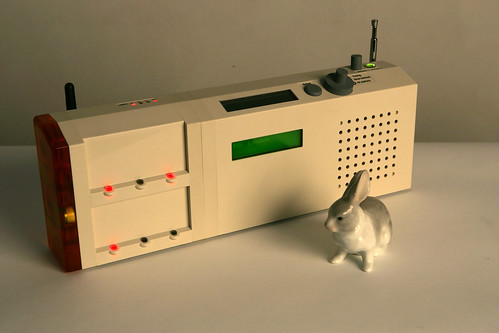Matt Jones and I have been in San Francisco this week, for meetings and a conference (an event called Foo Camp). We’ve been demoing Ojito, a cheap 3D device for the iPhone we’ve developed. Although it wasn’t the purpose of the trip, we’ve pitched it maybe two dozen times, sometimes in less than a minute in a corridor, and it’s fascinating how that process helps distill a product concept and clarify its route to market.
I met one guy and he was like, “oh, great name, how did you come up with it,” so I told the story: we give all our projects codenames after places on the Colorado Plateau. We need essentially meaningless names for the dark projects, and it’s one of my favourite regions in the world. Ojito is a place there. And he replied, “no, no, you don’t understand. I speak Portuguese. Ojito, it means LITTLE EYE.” Auspicious.
My plan for the remainder of this week is to write Ojito up as a plan and cost it, and catch up on the admin that’s difficult to do away — invoicing, payroll and so on: there’s an approved suppliers list the company needs to get on otherwise we’ll lose our chance at a project, and the other big task is setting up a subsidiary company to run Ashdown so that project can start. The wheels are in motion but I need to speak with the bank.
Jack and Tom are in London, working together on a toy I’m really looking forward to seeing. It needs a codename. I understand there are stickers involved. That’ll continue next week.
Tom has been spit-and-polishing the website. Jack has been finishing the stationery templates for invoices and so on. Next week he’s doing some video work with Timo on our RFID research project.
Energy is important to new product development, and to creating new work, as is perspective. It’s easy to get mired in even the most exhilarating work and lose sight of what’s important in a product, and work is always better – and easier – when it’s approached with bright eyes and an open, confident nature. For projects that last longer out of the public eye, you need willpower too.
Conversations and conferences help (Matt J and Tom are both at dconstruct this Friday). What erodes these feelings is a lack of stability. In that spirit, the big news this week is mundane: we’ve been waiting for invoices to two clients to be paid… and in the last couple days, the money landed in the bank. Frankly it’s a relief. Large company bureaucracy can make the payment process time-consuming to navigate, and now especially – what with expanding and investing in new product ideas – Berg’s two major resource constraints are attention and cash flow. Having these invoices paid makes me realise quite how tense I’ve been about the latter for the last month (I don’t mind saying that most of my waking cycles go to thinking about the company), and it’ll be good to return to the normal situation of just having too many exciting projects to work on. That’s life in the Escalante.

